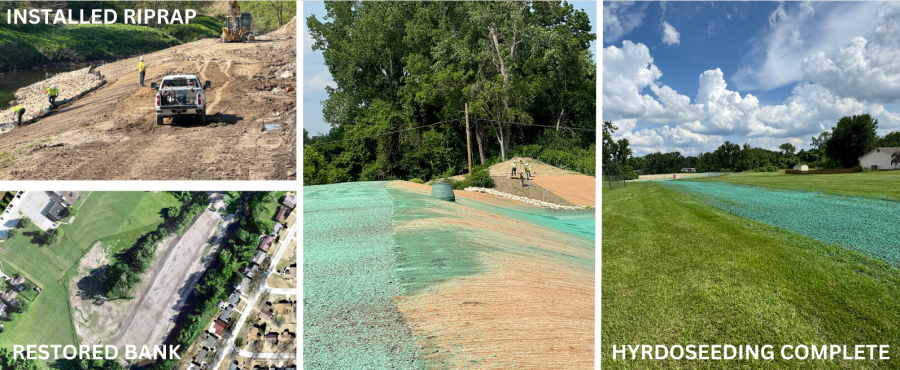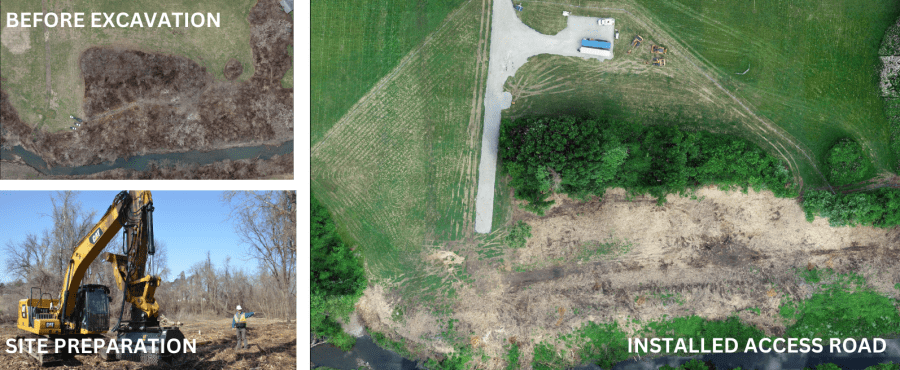Contaminated soil removed along Coldwater Creek near Jana Elementary School, Army Corps of Engineers says

FLORISSANT, Mo. – The U.S. Army Corps of Engineers has completed a project to remove all contaminated soil from the banks of Coldwater Creek near Jana Elementary School.
In a statement, the Corps of Engineers claims its Formerly Utilized Sites Remedial Action Program (FUSRAP) team successfully excavated and removed 7,416 cubic yards of radioactive-contaminated soil from the site, enough to fill more than eight Olympic-sized swimming pools.
The FUSRAP team excavated approximately 19,500 cubic yards of uncontaminated soil in order to reach the contaminated dirt. The uncontaminated soil was used as backfill during restoration efforts. The contaminated dirt was shipped out of the state via railcars to licensed disposal facilities.
The Army Corps’ FUSRAP team in St. Louis will host an open house on Wednesday, June 12, from 6 p.m. to 8 p.m. at the Florissant Municipal Courts Building to discuss this and other operations in the area and to address residents’ concerns. The open house will also be live-streamed on the USACE St. Louis District Facebook page.
Thanks for signing up!
Watch for us in your inbox.
Subscribe Now
Daily News
FUSRAP teams are present at 19 locations across the nation where nuclear waste from World War II and Cold War-era production and testing has contaminated the soil.
Between 1942 and 1957 in St. Louis, Mallinckrodt produced uranium for the Manhattan Project as part of a deal with the U.S. government. The nuclear waste was placed in hundreds of thousands of drums and buried in a 21.7-acre site near St. Louis Lambert International Airport. Eventually, the drums were removed, with some of the waste being sent to Colorado and the rest going to the West Lake Landfill and another landfill on Latty Avenue in Hazelwood. Some of the waste seeped from the sites on Latty Avenue and at the airport into Coldwater Creek.
In July 2023, previously unreleased government records showed radioactive waste was known to pose a threat to people living near Coldwater Creek as early as 1949. But federal officials repeatedly downplayed the risks and dismissed potential risks as “minimal” or “low-level.”
The Coldwater Creek Site 386, a Hazelwood School District Property, needed extensive preparation before remediation could begin. This involved clearing dense brush, grading and adding an access road and lot to store equipment. (Courtesy: U.S. Army Corps of Engineers) Contractors working with FUSRAP meticulously excavated 26,919 cubic yards of soil with 7,416 cy being contaminated soil. The contaminated soil was sent out of state via railcars to licensed disposal facilities. (Courtesy: U.S. Army Corps of Engineers) The remediated and restored creek bank has riprap installed to prevent erosion and has been hydroseeded for grass. Other native plants will also be installed along the riprap to further prevent erosion. (Courtesy: U.S. Army Corps of Engineers)
Copyright 2024 Nexstar Media, Inc. All rights reserved. This material may not be published, broadcast, rewritten, or redistributed.
For the latest news, weather, sports, and streaming video, head to FOX 2.




